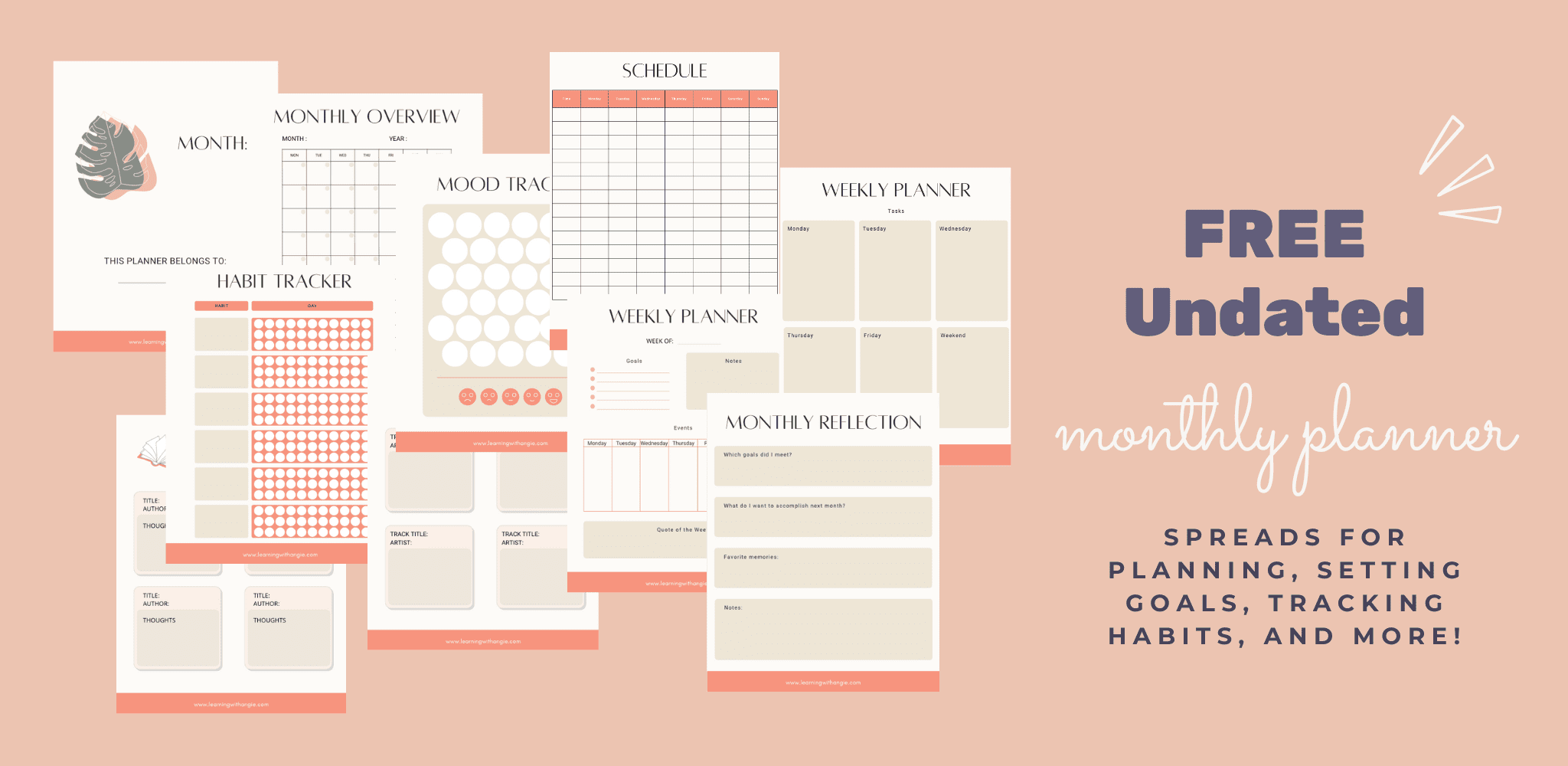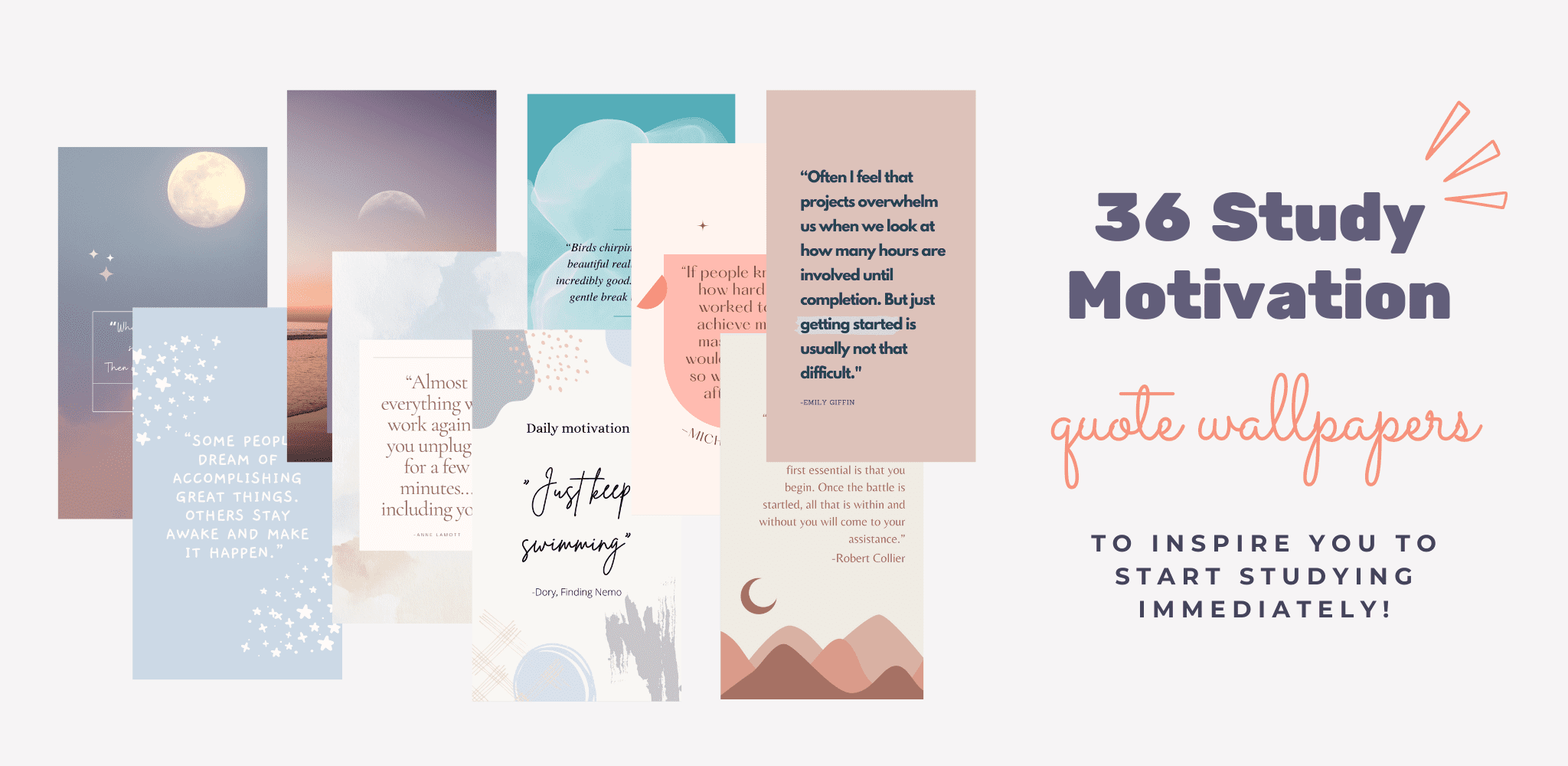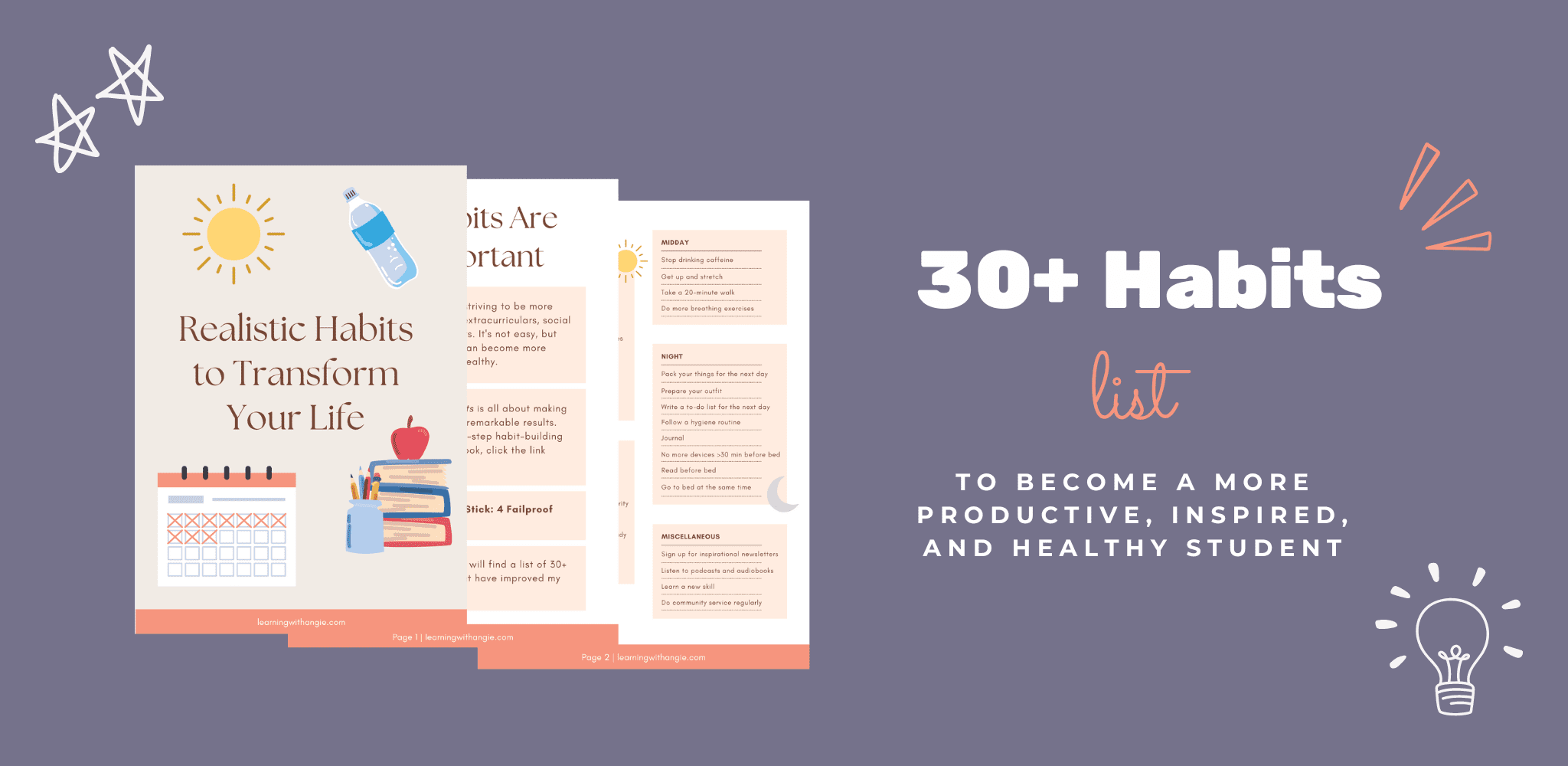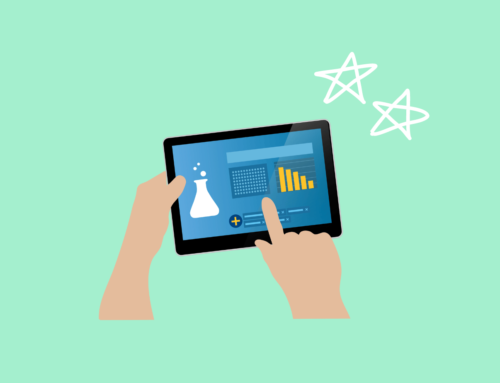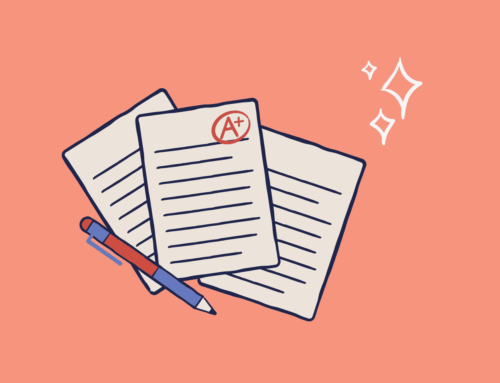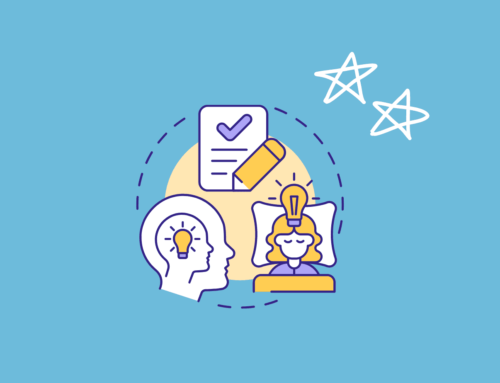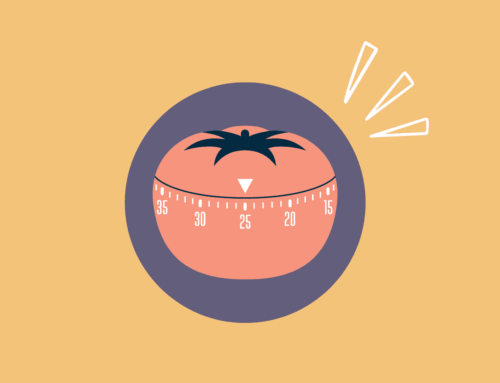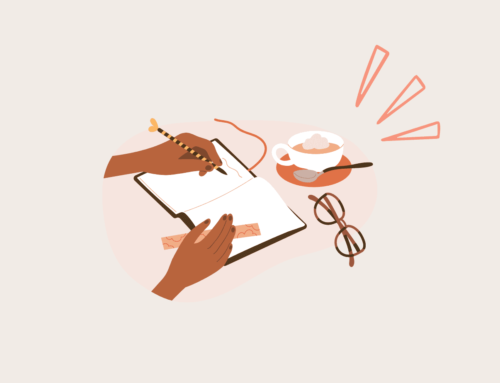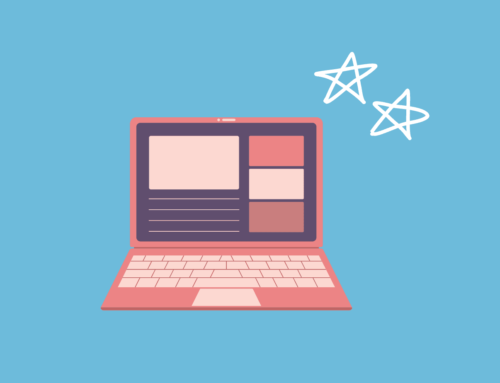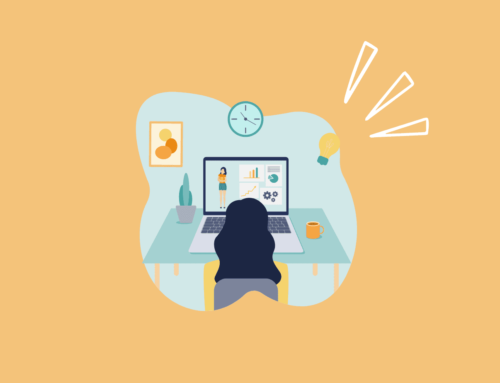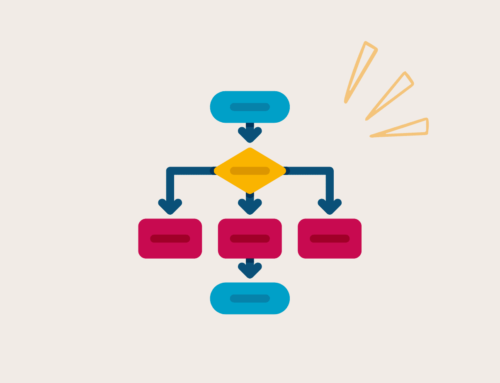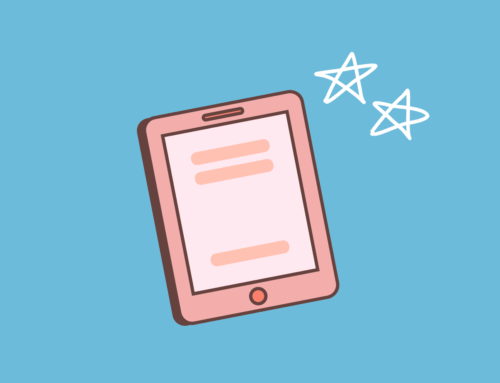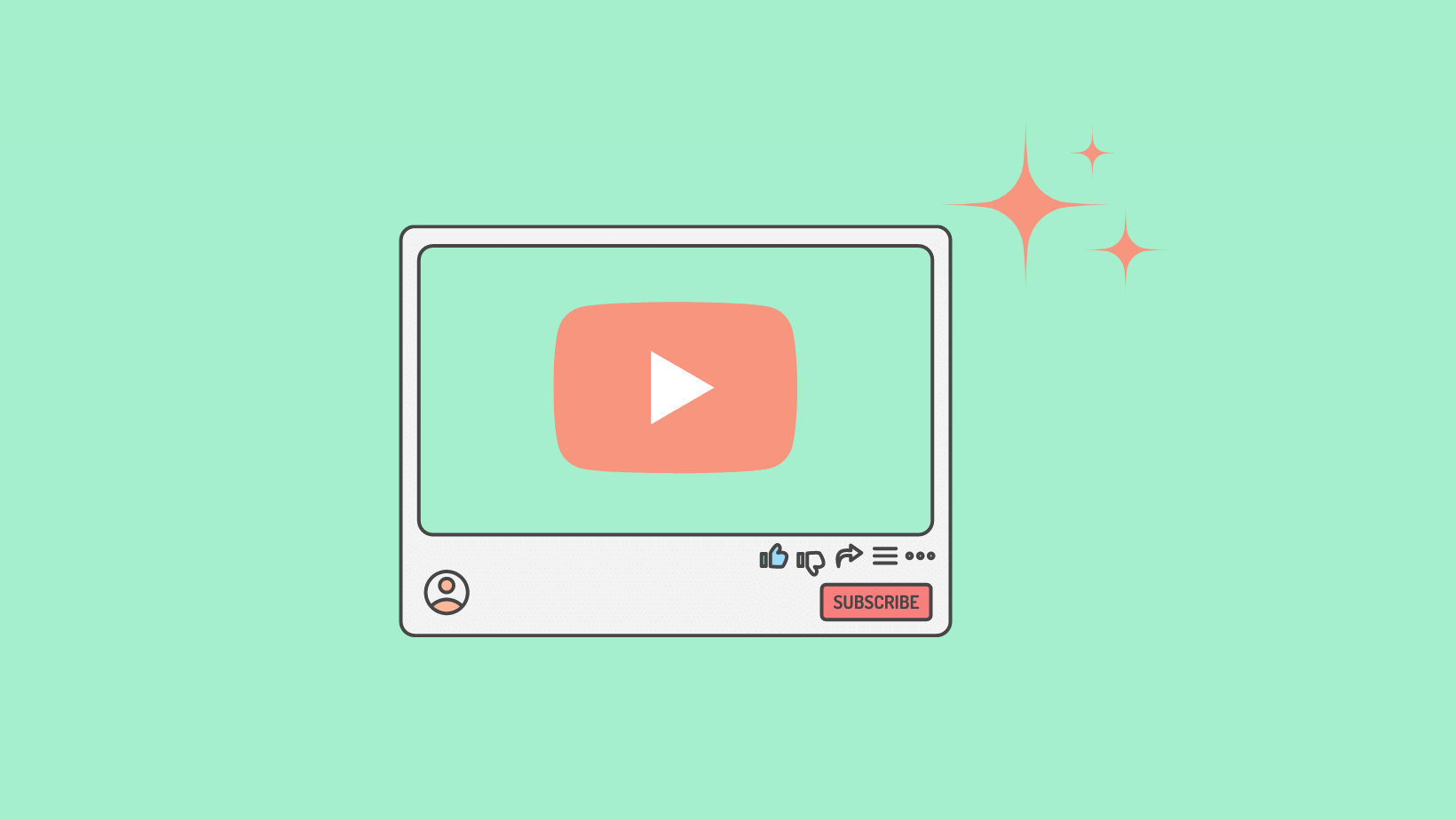

You sit down to study for a test.
For the first 15 minutes, you’re focused on reviewing your notes.
But then, YouTube starts calling your name. You try desperately to resist the temptation.
Finally, however, you give in and tell yourself, “Just one video!”
So you open up YouTube, and before you know it, you’ve gone from watching a lifestyle vlog to endless YouTube shorts on Korean skincare products.

But then, you end up feeling guilty because you didn’t get much studying done. You just wish you knew how to stop getting distracted by YouTube while studying.
Sound familiar?
In the technology-dependent education system we have today, it’s extremely difficult to avoid digital distractions.
Personally, I’m not a big social media person, but I’ve always found YouTube to be addicting. In the past, I would often frequently find myself in the following loop:
- Watch video
- See interesting suggested video
- Watch that video
- Repeat
And with the emergence of YouTube Shorts, YouTube has ascended to another level of temptation (which is the goal of the algorithm creators, of course).

However, by implementing certain strategies, I’ve been able to break this loop. And I’m here to tell you that you can too.
In this article, I’ll be sharing 11 strategies to help you stop getting distracted by YouTube while studying.
I’ve organized the strategies into 3 tiers, with Tier I being the least intense preventative measures and Tier III being the most intense. You can start with Tier I and potentially move on to Tier II or Tier III, based on the amount of temptation you experience.
At the end, I’ll also provide tips to help you avoid YouTube distractions in the long term, not just in the short term. So make sure to stick around!
This post may contain affiliate links, which means that when you make a purchase through a link, I make a small commission at no extra cost to you.
Tier I: Pepperoncini

Write Down a To-Do List
Before you start studying, make a to-do list of what you need to study. Also, make it specific.
Writing down something vague like “study for unit 9 bio test” won’t help you stay on task. Instead, break down the test into subtopics like this:

Breaking down a test into subsections will make studying seem less daunting. Plus, having a more concrete plan will make it easier and more motivating to study.
As you study sections, you can check them off, providing a sense of accomplishment!
Time Block Your Study Schedule
Oftentimes, we create unrealistic to-do lists for ourselves that we can’t possibly complete.
Unfortunately, you fall into the habit of having an unfinished to-do list. As a result, seeing tasks on your to-do list doesn’t elicit the thought, “Hey, I need to get this done today!”
To solve this problem, you should time block your schedule. Exactly as it sounds, this involves designating specific time blocks to specific tasks.
Here’s an example of a time blocked study schedule:
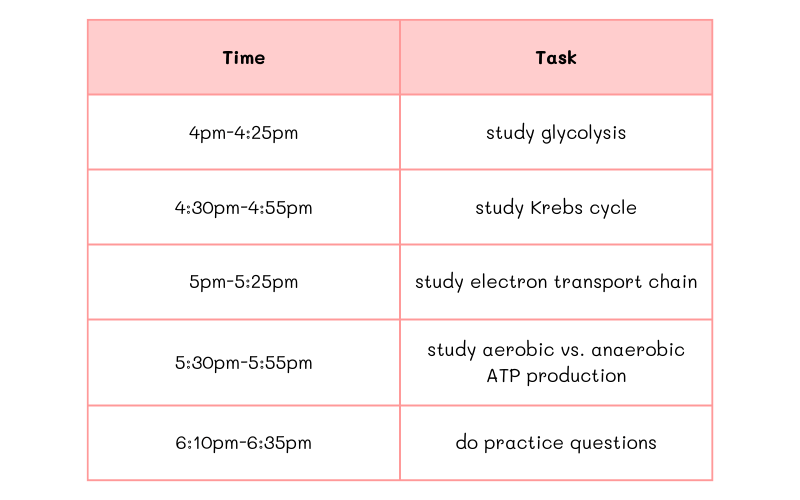
Time blocking helps you create a realistic to-do list.
Also, it helps you stay on task. That’s because it creates artificial deadlines for you to complete certain tasks. As a result, you have a sense of urgency while studying.
You may also like “9 Guaranteed Ways to Overcome Procrastination for Students”
Use the Pomodoro Technique
I’ve mentioned the Pomodoro Technique several times in the past, but that’s because it’s a serious game changer for productivity and long periods of focus.
Here’s a simple breakdown of the Pomodoro Technique:
- Study in 25-minute blocks
- After every block, take a 5-minute break
- After 4 work blocks, take a longer break of 15-20 minutes
To maximize the effectiveness of the Pomodoro Technique, write down what task(s) you want to accomplish within each work block.
Doing so will give you a sense of urgency that pushes you to stay on task.
Click here for the online Pomodoro timer I frequently use (in fact, I’m using it right now to write this article!).
The Pomodoro session tracker page from my student Notion setup.
Use Your Breaks Wisely
It’s extremely important to take breaks while studying.
In the past, I would neglect to do this. However, this had negative results. I would work nonstop for an hour or more, get tired, then try to mentally “recharge” by watching YouTube.
Because I was so mentally exhausted (I had to study late at night because of daytime commitments), I would get sucked into a rabbit hole and watch videos for a half hour or more.
Since implementing regular breaks in my study routine, I’ve been able to avoid this and stay focused for longer periods of time. (This is another reason the Pomodoro Technique works so well””it forces you to take breaks.)
However, here’s the catch:
How you spend your break time determines the effectiveness of the break.
If you spend your break time on YouTube or scrolling through social media, you’ll easily get sucked into a rabbit hole.
Instead, you should spend your break in a healthy way. Here are some ideas:
- Just sit there and close your eyes
- Listen to some calming music (if you’re super sensitive to music like me, listening to upbeat music may kickstart your adrenaline and make it difficult to focus)
- Eat a healthy snack
- Go outside for a few minutes
- Stand up and stretch
- Play with your pet

Create Visual Reminders
Visual reminders can be quite powerful. When you can see something, it becomes hard to avoid it.
Here are some visual reminders you set to stop getting distracted by Youtube while studying:
- Write down motivational quotes on sticky notes, and put them on your desk, wall, or device””wherever they’re visible. Here are some good quotes to write down:
- “Success is the sum of small efforts, repeated day in and day out.” ““ Robert Collier
- “Work as hard as you can and then be happy in the knowledge you couldn’t have done anymore.” ““ Unknown
- “If people knew how hard I worked to achieve my mastery, it wouldn’t seem so wonderful after all.” ““ Michelangelo
You may also like “36 Quotes to Motivate You to Study Immediately + Wallpapers”
- Write down how much time you’re saving by avoiding YouTube on a sticky note. If you reduce your YouTube time by an hour each day, you save 2 weeks a year! Or, even if you reduce your YouTube time by 30 minutes each day, you save 1 week a year!
- In addition to writing sticky notes, you can also set the wallpaper on your devices to motivational quotes or positive reminders. (particularly on the devices you most frequently reach for to watch YouTube)

Put Away Non-Essential Devices in Another Room
When you’re studying, put away all devices you’re not using in a different room. Creating physical distance will also make it easier to resist temptation.
When I study, I put my phone and tablet downstairs, since I study upstairs. The idea of having to go downstairs to retrieve them prevents me from doing so.
Other options include storing distracting devices in a drawer or even a safe to prevent yourself from using them.
Tier II: Jalapeño

Quick Note: Tier II strategies serve as an additional layer on top of Tier I strategies. If Tier I strategies aren’t sufficient, you should still continue them, but add Tier II strategies as a supplement.
Install a Website Blocker
There are many extensions you can download to block specific websites for specific time periods.
I currently use LeechBlock NG, which is an extension compatible with Firefox, Chrome, Edge, and a couple other browsers.
It’s free and super easy to set up, as I’ll show below.
Once you have the extension installed on your browser, click on the icon and select “Options”. It will bring you over to the window you see below.
First, set a name for your set of blocked websites. I called mine “Blocked While Studying”.
Then, enter “youtube.com” and any other websites you want to block in the section below.

Next, specify the periods you want the websites to be blocked. Make sure to use military time.
In the optional section below, you can set how much time you’re allowed to access a website in a period of time (e.g., 10 minutes per hour).
Then, select the days you want the website blocker to take effect.
In the “How to Block” section, you have the option to customize the website blocker according to your preferences.
Then, simply click “Save Options” or “Save Options and Close” and you’ll be ready to go!

For example, here’s what shows up in my browser when I try to access YouTube:

There are also many paid website blockers that provide more features. You can check them out here.
Install an App Blocker
If you must have other devices in the room, installing an app blocker on these devices can be extremely helpful.
I highly recommend getting one because let’s be real, setting screen time limits is not particularly effective (I know from personal experience). Choosing the “15 more minutes” option becomes autopilot fairly quickly.
I suggest using One Sec. It forces you to take time to reconsider after opening an app and has been proven to reduce app usage by an average of 57%!
Unfortunately, the official app is only available to iOS users. However, they are developing an Android version, so if you are an Android user, you can access the Beta version.
To learn how to set up automations to block app usage, see the steps below:
After downloading the app, head to the Shortcuts app and add a new automation.

Next, select the App option.

Configure the following window as follows:

Search for the One Sec app. Then, select “Activate one sec”.

Select YouTube from the dropdown again.

Select “Don’t Ask” (the automation won’t work otherwise).

And that’s it! Now, when I open YouTube, I see the following screen:

If you’re tempted to access YouTube through a browser, you can also install One Sec as an extension to block websites.
For a complete tutorial on how to do this, head over to the “Website Blocking Tutorial” in the Settings tab of the app.

In the Settings tab, you can also configure many other features.
For example, you can trigger healthy alternatives when opening an app. Or, you can even set a morning countdown so you don’t get sucked into YouTube first thing in the morning.
Many of these options are only available with the pro plan, but the pricing is not bad, especially if you opt for the Pro Plan (Lifetime Unlock).
Nevertheless, the free plan still comes with great features that will help you stay away from YouTube while studying.
Tier III: Ghost Pepper

Quick Note: As I mentioned for Tier II, Tier III strategies serve as an additional layer on top of lower-tier strategies. However, be warned that while Tier II strategies are still relatively mild, Tier III gets pretty intense.
Print Everything Out and Turn On Airplane Mode
If you can print your notes and other study materials out, then you should do it. If it’s too difficult to resist YouTube when studying on technology, this method can be extremely effective.
As a supplement to using physical materials to study, you should turn on airplane mode.
Personally, I enjoy taking handwritten notes, so studying without technology has always been an option for me.
However, if you prefer taking notes digitally, I recommend Notability. It’s free to download, although you do need to pay to unlock all its features. In my opinion, the paid plan is worth it, although you can start with the free plan to see if you like it.
You can handwrite or type notes in Notability and import and mark up study materials, to name a few features. Plus, you can access it offline.

As you can see in this screenshot, I was able to export a Google Doc and mark it up.
That way, even if printing notes and study materials out isn’t an option, you can still study without Internet access.
Have Family Members Hold You Accountable
If it really comes down to it, you can have your parents store your devices away while studying. However, this is truly a last resort.
How do you stay focused while studying on YouTube?
Before I move on to the last section, “Make It Stick,” I want to take a quick moment to address this FAQ.
Although YouTube holds many distractions, it’s also undeniable that YouTube provides many great resources.
Sometimes, it’s impossible to avoid YouTube while studying. Seeing things explained visually can often be very helpful.
Luckily, there is a way to study on YouTube without getting distracted!
There are several websites you can go to that provide access to YouTube videos but cut out distractions (e.g., recommended videos, comments).
Also, there are several extensions you can download to access YouTube but eliminate distracting elements.
You can check them out here.
Make It Stick
To stop getting distracted by YouTube while studying in the long term, here are helpful strategies you can implement:
Reward Yourself
At the end of a study session, reward yourself for avoiding YouTube distractions.
This creates a positive association with resisting the temptation of YouTube while studying.
One option is positive self-talk. Talk to yourself as though you were encouraging another person. For example, you could say, “I’m proud that I avoided YouTube while studying today. It wasn’t easy, but it helped me stay more focused while studying. I know I can keep it up.”

Also, you can reward yourself by watching YouTube for 20-30 minutes.
In this case, I recommend becoming more aware of the types of videos you watch.
There’s nothing wrong with watching something funny or lighthearted every once in a while.
However, recently, I’ve started watching more videos that inspire me””videos related to productivity, personal finance, healthy routines, etc.
I find that even when I do open YouTube nowadays, I associate it with learning and inspiration, rather than a rabbit hole of distractions.
Write Down Why You’re Doing This
Writing things down helps collect your thoughts and feelings in a way that gives you greater resolve.
Grab a piece of paper or a journal.
Then, write about all the time you’re saving by avoiding YouTube while studying.

Here’s my personal experience with this method:
This isn’t related to YouTube, but when I consistently failed to meet my goal of sleeping earlier, I wrote about it in my journal.
I wrote that I was losing hours that accumulated into days, even weeks every year to sleep deprivation. I wrote that from this perspective, it wasn’t worth staying up two extra hours every night to “get more work done” or watch YouTube (the irony”¦).
My terrible sleeping routine was severely compromising my long-term productivity.
Writing things down in a logical way put my poor sleeping habits into perspective and gave me greater resolve to sleep earlier.
Therefore, I suggest you do the same in regard to watching YouTube and other poor habits you want to break.
Be Patient and Practice Visualization
On average, it takes 66 days for a habit to become automatic. That may sound discouraging, but think about it this way:
If you stick to it, in 66 days, you’ll be a transformed student.
Visualize yourself as a focused student, freed from the distractions of YouTube and significantly more productive.
In 66 days, you could be a completely different student. Also, you’ll have saved nearly 3 days that would have been wasted on YouTube.
Use the Seinfeld Strategy
If you still think 66 days sounds like a terribly long time, use the Seinfeld Strategy to help you out.
The Seinfeld Strategy is all about “not breaking the chain”.

You can read more about it here, but here’s how you can use it:
- Get a calendar and hang it up on your wall. I recommend getting this 12-month dry-erase calendar. Or, if this is too large, you can opt for a single-month or three-month calendar.
- At the bottom of the calendar, write that your goal is to become a transformed, productive student. This is a good reminder for why you’re trying to build the habit of avoiding YouTube.
- Each day you aren’t distracted by YouTube while studying, mark an X on the date.
- When you feel particularly tempted, look at the calendar and remind yourself not to break the chain. Treat it as a kind of game, if you will.
And that’s it! It’s super simple but extremely effective.
You Can Stop Getting Distracted By YouTube While Studying
Remember that as long as you set your mind to it, you can stop.
It might be difficult at first, but always remind yourself why you’re doing it””you’re saving countless hours and transforming into a more productive, distraction-resistant person all around.

And remember that in a little over 2 months, avoiding YouTube will become autopilot (although once a habit is established, you still need to have the self-discipline to follow it).
From my experience, I know that once you get used to focused studying, you won’t want to turn back. The temptation of YouTube will decrease significantly over time.
I hope this article gave you inspiration on how to avoid YouTube while studying. Let me know which strategies you’ll be implementing in the comments below!
Lastly, for more on productivity and studying, check out these posts:
- 9 Guaranteed Ways to Overcome Procrastination for Students
- 36 Quotes to Motivate You to Study Immediately + Wallpapers
- 9 Best Night Routines for Students to Skyrocket Productivity
- 7 Secret Tips For Studying That Will Transform How You Study
- Productive Day Schedule For Students””Be Productive 12+ Hours a Day!

Learning With Angie is a place to share honest, unfiltered advice to promote student success. So if you’re a student (high school, college, or beyond) looking for tips on productivity, studying, personal growth, and more to reach your potential, this is the place! To read more about Learning with Angie, click here.

